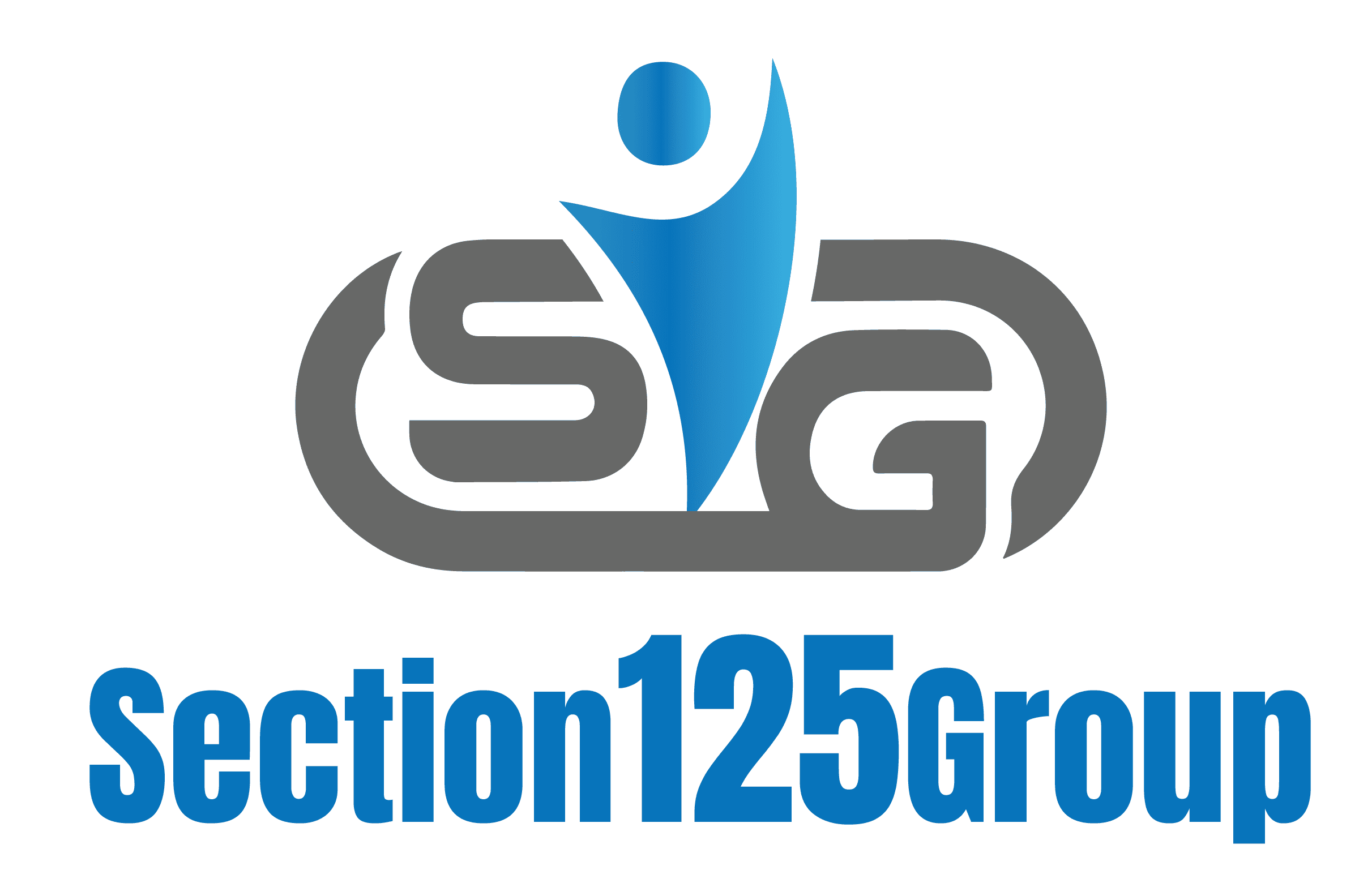Understanding Section 125 Cafeteria Plans and Their Tax Benefits
A Section 125 Cafeteria Plan is a flexible benefits plan that offers employees a variety of pre-tax benefit options, allowing businesses to save on payroll taxes while providing workers with valuable health and welfare benefits. The tax advantages associated with Section 125 plans are one of the primary reasons businesses implement them. This blog post will delve deep into the tax benefits, helping both employers and employees understand how this type of plan can contribute to financial efficiency and well-being.
What Is a Section 125 Cafeteria Plan?
A Section 125 Cafeteria Plan, named after the section of the Internal Revenue Code that defines it, is an employee benefit plan that provides employees with a choice among a menu of tax-advantaged benefits. These benefits can include health insurance, flexible spending accounts (FSAs), dependent care assistance, and other welfare benefits.
For businesses, the major advantage of adopting a Section 125 Cafeteria Plan is the tax savings. Employers do not pay Social Security, Medicare, or Federal Unemployment Tax Act (FUTA) taxes on the amount of an employee’s pre-tax salary that is directed toward their benefits. This results in cost savings for employers while providing employees with the opportunity to lower their taxable income.
Key Tax Benefits of a Section 125 Cafeteria Plan for Employers
- Payroll Tax Savings One of the most significant advantages for employers is the reduction in payroll taxes. When employees opt for pre-tax benefits, employers save on both Social Security and Medicare taxes, as well as federal unemployment taxes. For example, if an employee selects $5,000 worth of benefits, the employer does not need to pay the employer’s portion of Social Security (6.2%), Medicare (1.45%), or FUTA taxes on that $5,000. These tax savings can be substantial for businesses, especially as the number of employees and the value of benefits increase.
- Reduced Worker Compensation Costs Some employers may see a reduction in their workers’ compensation premiums. Workers’ compensation insurance premiums are often based on payroll, and by reducing taxable income, a Section 125 plan can lower the payroll on which these premiums are calculated.
- Administrative Cost Savings Offering a Section 125 plan can help streamline benefits administration. The plan allows employees to select their benefits through a cafeteria-style menu, and this can help reduce administrative burdens on human resources teams. In addition, many third-party administrators offer cost-effective solutions to manage these plans.
- Attracting and Retaining Talent Companies that offer a comprehensive benefits package, including a Section 125 Cafeteria Plan, are more attractive to top talent. Providing employees with the flexibility to choose benefits that suit their needs – whether health insurance, dependent care, or other fringe benefits – can make a company stand out as an employer of choice in competitive labor markets. This can help businesses retain employees for longer periods and minimize turnover costs.
- Cost Control Section 125 plans give employers the ability to control how much they contribute to their employees’ benefits. Employers can choose to contribute a fixed amount or allow employees to select benefits that fit within a predetermined budget. This flexibility makes it easier for employers to manage their benefits expenses and adjust plans based on business needs.
Tax Benefits for Employees in a Section 125 Plan
While employers enjoy tax savings, employees also benefit greatly from participating in Section 125 Cafeteria Plans. The following are the key tax advantages that employees receive:
- Lower Taxable Income One of the most significant benefits for employees is the reduction in taxable income. When employees elect to use their pre-tax income for benefits like health insurance, dental coverage, and FSAs, they are reducing their gross taxable income. This means they will pay less in income taxes. For example, if an employee earns $50,000 a year and selects $5,000 in pre-tax benefits, their taxable income is reduced to $45,000. This can result in substantial savings on federal and state income taxes.
- Tax-Free Contributions to Health Savings Accounts (HSAs) and Flexible Spending Accounts (FSAs) Contributions to Health Savings Accounts (HSAs) and Flexible Spending Accounts (FSAs) are made with pre-tax dollars. Both HSAs and FSAs allow employees to set aside money for qualified medical expenses, reducing their taxable income and providing a way to save for future healthcare costs. These funds can be used for co-pays, prescriptions, medical devices, and more. The money in these accounts can grow tax-free, and, in the case of an HSA, the funds can be rolled over year after year.
- Dependent Care Assistance Many Section 125 Cafeteria Plans offer dependent care assistance benefits, allowing employees to use pre-tax dollars to pay for childcare or care for elderly dependents. This can result in tax savings while helping employees manage their caregiving responsibilities. The IRS allows employees to contribute up to $5,000 per year to a Dependent Care Flexible Spending Account (FSA) on a pre-tax basis. This can significantly reduce taxable income while helping cover the costs of child care or elder care.
- Employee Premium Deductions Another important tax benefit for employees is that they can often use pre-tax dollars to pay for their share of health insurance premiums. This allows employees to pay less in federal, state, and Social Security taxes. As a result, the portion of their salary directed to health premiums is not subject to income tax or payroll taxes, further lowering their taxable income.
- Flexibility in Benefit Selection Employees also benefit from the flexibility of Section 125 plans. With various benefits options available – such as dental and vision insurance, life insurance, and accident coverage – employees can customize their benefits to fit their unique needs. This flexibility makes it easier for employees to choose benefits that are aligned with their personal and family situations.
The Compliance and Administration of Section 125 Plans
While Section 125 Cafeteria Plans offer valuable tax benefits, they are also subject to strict compliance and administrative requirements. Employers must ensure that their plans comply with federal tax laws, including the Employee Retirement Income Security Act (ERISA) and the Affordable Care Act (ACA).
- Plan Documentation and Reporting Employers must maintain plan documents that clearly define the benefits offered under the Section 125 plan, including a list of eligible benefits, plan rules, and any restrictions. These documents must be made available to employees, and employers must also file certain documents with the IRS to maintain compliance.
- Non-Discrimination Rules One of the key requirements for Section 125 plans is that they must be non-discriminatory. This means that the benefits must be offered equally to all employees, and highly compensated employees cannot receive preferential treatment. If a plan violates these rules, the tax benefits for all employees may be jeopardized.
- Annual Reporting Requirements Employers must file annual reports detailing the cost and benefits of the plan. This includes reporting the contributions made to employees’ benefits and the total cost of the cafeteria plan to the business.
- Third-Party Administrators Many businesses choose to outsource the administration of their Section 125 plans to third-party administrators (TPAs). These TPAs can help ensure compliance, handle plan enrollment, manage claims, and assist with annual reporting. Outsourcing these administrative tasks can reduce the burden on businesses and ensure that the plan is administered correctly.
Additional Considerations for Section 125 Cafeteria Plans and How to Maximize Tax Savings

While the tax benefits of Section 125 Cafeteria Plans are clear, maximizing these be
nefits requires strategic planning and a solid understanding of the rules surrounding these plans. In this section, we will exp
lore how employers and employees can fully utilize the plan’s tax advantages while adh
ering to compliance guidelines and best practices.
Compliance with the Affordable Care Act (ACA)
The Affordable Care Act (ACA) mandates that certain health plans meet specific requirements to avoid penalties. Although Section 125 Cafeteria Plans allow employees to use pre-tax dollars for health insurance premiums, employers must ensure that their plans meet ACA compliance standards. This includes providing health insurance that meets the Minimum Essential Coverage (MEC) standard. Employers offering these plans need to report employee coverage and provide certain benefits to avoid any penalties.
- Meeting ACA Requirements The ACA requires that applicable large employers (ALEs), defined as those with 50 or more full-time employees, provide affordable health insurance to their employees. Section 125 plans can be a key part of ACA compliance, but the coverage offered must meet the ACA’s affordability and coverage requirements. Employers must assess whether their plans provide the required coverage and offer it at an affordable rate to employees based on their income.
- Employer Shared Responsibility Payments Employers who fail to comply with ACA guidelines may face penalties under the Employer Shared Responsibility Payment (ESRP). This penalty applies if the employer does not offer affordable health insurance or offers inadequate coverage to its employees. To avoid these penalties, Section 125 Cafeteria Plans should be structured to meet ACA standards. Businesses should work with legal and HR professionals to ensure compliance.
Cost Allocation and Employee Contributions
Employers who implement a Section 125 Cafeteria Plan can choose between different methods for how employees contribute to the plan. The contribution model can have a significant impact on the tax savings that both employers and employees experience.
- Flexible Contribution Methods Employers can structure the plan in several ways. For example, an employer might offer a “core” set of benefits that are fully covered and then allow employees to choose additional benefits based on their preferences. This structure provides employees with flexibility while enabling the employer to control costs. The more flexible the plan is, the more likely employees are to use pre-tax dollars for benefits, maximizing their tax savings.
- Employee vs. Employer Contributions Some employers may cover a larger portion of employees’ benefits under a Section 125 plan, while others may require employees to contribute more. The tax benefits for both parties will depend on the contribution structure. Employers may also choose to match a portion of employees’ contributions, providing an incentive for employees to enroll in the plan. The more an employer contributes to the plan, the more tax savings they can generate by reducing payroll taxes.
- Tax Implications of Over-Contribution While Section 125 plans offer tax savings, employers must be mindful of contribution limits. Exceeding these limits could result in taxable benefits for employees. For example, excessive contributions to an FSA or dependent care account could trigger taxes. Employers should review the contribution limits for each benefit option offered and ensure they remain within the IRS guidelines to avoid unwanted tax consequences.
Managing Health Savings Accounts (HSAs) and Flexible Spending Accounts (FSAs)
Health Savings Accounts (HSAs) and Flexible Spending Accounts (FSAs) are two of the most commonly utilized benefits under Section 125 Cafeteria Plans. Both accounts offer significant tax advantages, but there are distinct differences between them that employers and employees should consider when managing their benefits.
- Health Savings Accounts (HSAs) HSAs allow employees to save money for healthcare expenses on a pre-tax basis. The contributions to an HSA are tax-deductible, the funds grow tax-free, and withdrawals for qualified medical expenses are not taxed. Employees can also carry over unused HSA balances year after year, unlike FSAs, which are typically “use-it-or-lose-it.” To be eligible for an HSA, employees must be enrolled in a high-deductible health plan (HDHP).
Employers offering HSAs benefit by providing employees with an attractive, long-term savings tool. From a tax perspective, both employers and employees benefit from HSA contributions being exempt from payroll taxes. - Flexible Spending Accounts (FSAs) FSAs are similar to HSAs, but they have different rules. Unlike HSAs, FSAs have an annual “use-it-or-lose-it” rule, meaning employees must use the funds by the end of the year or forfeit the balance. FSAs can be used to pay for qualified medical expenses, dependent care, or even some insurance premiums.
For employers, FSAs offer a way to reduce taxable income for their employees, but it’s important to stay within the IRS contribution limits to avoid penalties. FSAs are also an excellent tool for employees who expect to incur predictable medical expenses, as the funds can be used for medical costs like co-pays, deductibles, and other healthcare-related expenditures.
Navigating Plan Administration and Third-Party Administrators
Managing a Section 125 Cafeteria Plan requires careful attention to administrative duties. To ensure smooth operations and compliance, many employers rely on third-party administrators (TPAs) to handle the logistics and legal requirements associated with these plans.
- What Third-Party Administrators Do TPAs can assist with the day-to-day management of Section 125 plans, including benefits enrollment, claims processing, and annual reporting. They ensure compliance with IRS regulations, helping employers avoid penalties. By outsourcing the administration of these plans, employers can focus on their core business operations without getting bogged down in the complexities of benefits management.
- Reducing Administrative Burden Managing a Section 125 plan internally can be time-consuming, especially for larger organizations. TPAs help reduce this burden by providing expertise in benefits administration, tax compliance, and reporting requirements. Outsourcing these tasks can save employers valuable time, reduce errors, and increase overall plant efficiency.
- Choosing the Right Third-Party Administrator When selecting a TPA, employers should consider the administrator’s experience with Section 125 Cafeteria Plans, their ability to provide clear communication with employees and their understanding of the relevant tax laws. A strong partnership with a TPA can streamline plan administration and ensure compliance, which in turn helps maximize tax benefits for both employers and employees.
Conclusion
The tax benefits of a Section 125 Cafeteria Plan are undeniable, offering both businesses and employees significant savings on healthcare costs, flexible spending, and other benefits. For employers, the primary advantage lies in reducing payroll taxes and administrative costs while offering attractive benefits that can help retain top talent. Employees benefit by lowering their taxable income and gaining access to a range of benefits that suit their unique needs. By offering a Section 125 plan, businesses not only provide a cost-effective benefits package but also help their workforce manage medical expenses and childcare costs more efficiently.
In conclusion, implementing a Section 125 Cafeteria Plan offers a win-win scenario: businesses save on taxes, while employees gain access to vital benefits that improve their financial and personal well-being.

